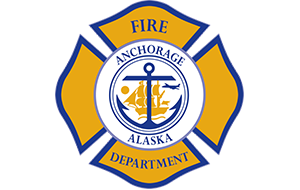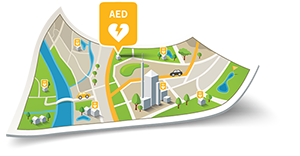Tagged with: Defibrillator Registry

November 24, 2025
Anchorage, Alaska Wins 2025 PulsePoint AED Contest
Anchorage Fire Department receives five ZOLL® AED 3 Defibrillators and a SaveStation Cabinet to place in the community.
The PulsePoint Foundation, a public non-profit 501(c)(3), announced that the Anchorage Fire Department has won the 2025 PulsePoint AED Contest, winning five ZOLL® AED 3 defibrillators and a SaveStation outdoor cabinet providing the first 24/7-accessible ZOLL AED placed in the community.
The contest took place during the month of October, Sudden Cardiac Arrest Awareness Month, and was eligible to any community using PulsePoint AED to locate and register AEDs. The Anchorage Fire Department collectively registered 132 at locations throughout the greater Anchorage area.
Filed Under: Press Release, Highlights | Tagged With: Anchorage Fire Department, AED Contest, ZOLL, ZOLL AED 3, SaveStation, AED Cabinet, 24/7 AEDs, Sudden Cardiac Arrest Awareness Month, NEAR Registry, National Emergency AED Registry, National AED registry, 911 AED, 911 Telecommunicators, 911 AED Registry, cardiac arrest, Defibrillator, Defibrillator Registry, Emergency AED Registry, Douglas Schrage, Michael Levy, out-of-hospital cardiac arrest, OHCA, Bystander CPR, Bystander Engagement, AED-Needed Alerts
April 28, 2025
What to know to save a life: The key to cardiac arrest survival
Bystander training on spotting and using defibrillators can greatly improve cardiac arrest survival, but many people don’t know what to do.
When a woman collapsed on an escalator at the Buffalo airport last June, Phil Clough knew what to do. He and another bystander put her flat on her back and checked her pulse and her breathing. Then she stopped breathing altogether. Realizing that she might be having a cardiac arrest, Clough immediately started doing chest compressions, pressing hard and quickly on the center of her chest, while others nearby called 911 and ran to get an automated external defibrillator. Within seconds of receiving a shock from the AED, the woman opened her eyes. By the time the airport rescue team arrived a few minutes later, she was conscious and able to talk with rescuers.
Filed Under: News, Highlights | Tagged With: AED, CPR, cardiac arrest, Defibrillator, Defibrillator Registry, Michelle Andrews, Phil Clough, 911, Automated External Defibrillator, Automated External Defibrillator Registry, American Heart Association, AHA, AED Locations, Cardiac Arrest Stats, Identifying AEDs, NEAR Registry, Nearby AED, 911 AED Registry, National AED registry, National Emergency AED Registry, AED Registry, AED Response, AED Responder, AED Map, PulsePoint AED, PulsePoint AED Registry, Elijah White, ZOLL, CPR Training, Good Samaritan, AED Law, AED Training, Citizen CPR Foundation, citizen responder, HEARTsafe, 911 Telecommunicators, T-CPR, T-AED, AED-Needed Alerts

November 27, 2023
911-initiated AED Response: Would you be willing to bring your AED to someone nearby experiencing a cardiac arrest?
While AED registries have traditionally been used to meet regulatory requirements, the growing use of dispatch-accessible, time-of-need emergency AED registries offers meaningful new opportunities to increase the use of these lifesaving devices. In addition to telecommunicator initiatives, communities are going further by using their registries to alert AED owners and program volunteers to nearby cardiac arrest events.
Filed Under: News, Event, Highlights | Tagged With: AED, 911-initiated AED, AED Alert, AED Response, AED Registry, AED Locator, AED Locations, AED Awareness, AED Registration, AED Registry for dispatchers, 911 AED, 911 AED Registry, EMD AED Registry, Emergency AED Registry, American Heart Association, AED Use, Heartrunner, GoodSam, cardiac arrest, Chain of survival, T-CPR, T-AED, EMD, Emergency Medical Dispatcher, Defibrillator Registry, Defibrillator, Integrated AED Locations, Pre-arrival Instructions, Emergency Telecommunicators, Emergency Dispatchers, CPR instructions, Recommending nearby AEDs, The Villages, Sumter County, AED Subscription, Stephen Kennedy, Residential AED, CARES, CARES Registry, Cardiac Arrest Registry to Enhance Survival, Cardiac Arrest Survival Summit, Community AED Volunteer, AED Responder

January 7, 2021
Emergency Telecommunicators Need Access to a Community AED Registry
Public Safety Answering Point (PSAP) telecommunicators are a critical link in the cardiac arrest chain of survival. Placing the proper tools in their hands can improve outcomes.
The PulsePoint Foundation provides PSAP technology to make "Is there an AED nearby?" an unnecessary question during cardiac arrest call processing while also advocating for broad adoption of this lifesaving capability. Our goal is for the telecommunicator to instead inform the caller of the location of nearby AEDs. Consider how much more effective it would be to say, “there is an AED at that store,” and direct the caller to “send someone to retrieve the AED from the customer service counter,” as CPR instructions begin? We back our advocacy and commitment with comprehensive and accessible resources. By providing exceptional, industry-supported AED registry solutions at no cost—and we genuinely mean free in all aspects—we strive to remove deployment impediments.
Filed Under: News, Highlights | Tagged With: AED Registry, AED, aed.new, 911 AED, AED Registry for dispatchers, Add an AED, Register an AED, FirstNet AED, AED Registry app, Nearby AED, Nearest AED, Dispatch recommend AED, Dispatcher recommended AED, Find AED, Locate AED, Source AED, Hosted AED Registry, Browser-based AED Registry, Cloud AED Registry, AED Management, AED Registry Management, Community AED Registry, Telecommunicator AED, Emergency Telecommunicators, ECC AED, Free AED Registry, No cost AED Registry, ProQA, ProQA AED Registry, Paramount AED Registry, Priority Dispatch AED, Priority Dispatch Registry, EMD AED, EMD AED Registry, Calltaker AED Registry, Call taker AED, AED Database, Cardiac Arrest AED, Sudden Cardiac Arrest AED, Where are AEDs located, Automated External Defibrillator Registry, Defibrillator Registry, Track AEDs, PAD Registry, Public Access Defibrillator, PAD AED Registry, Enhanced 9-1-1 AED, NG AED, NG Registry for AED, Find an AED, HeartSafe AED Registry, HeartSafe AED, National AED registry, AED Locator, AED Link, AED Registry Database, Priority Dispatch ProQA Paramount, Register a new AED, PSAP AED Registry, AED Registration, Tracking AEDs, Link AEDs, Online AED Registration, AED Program Management, AED Program Registry, AED Management Software, AED Log, AED Program